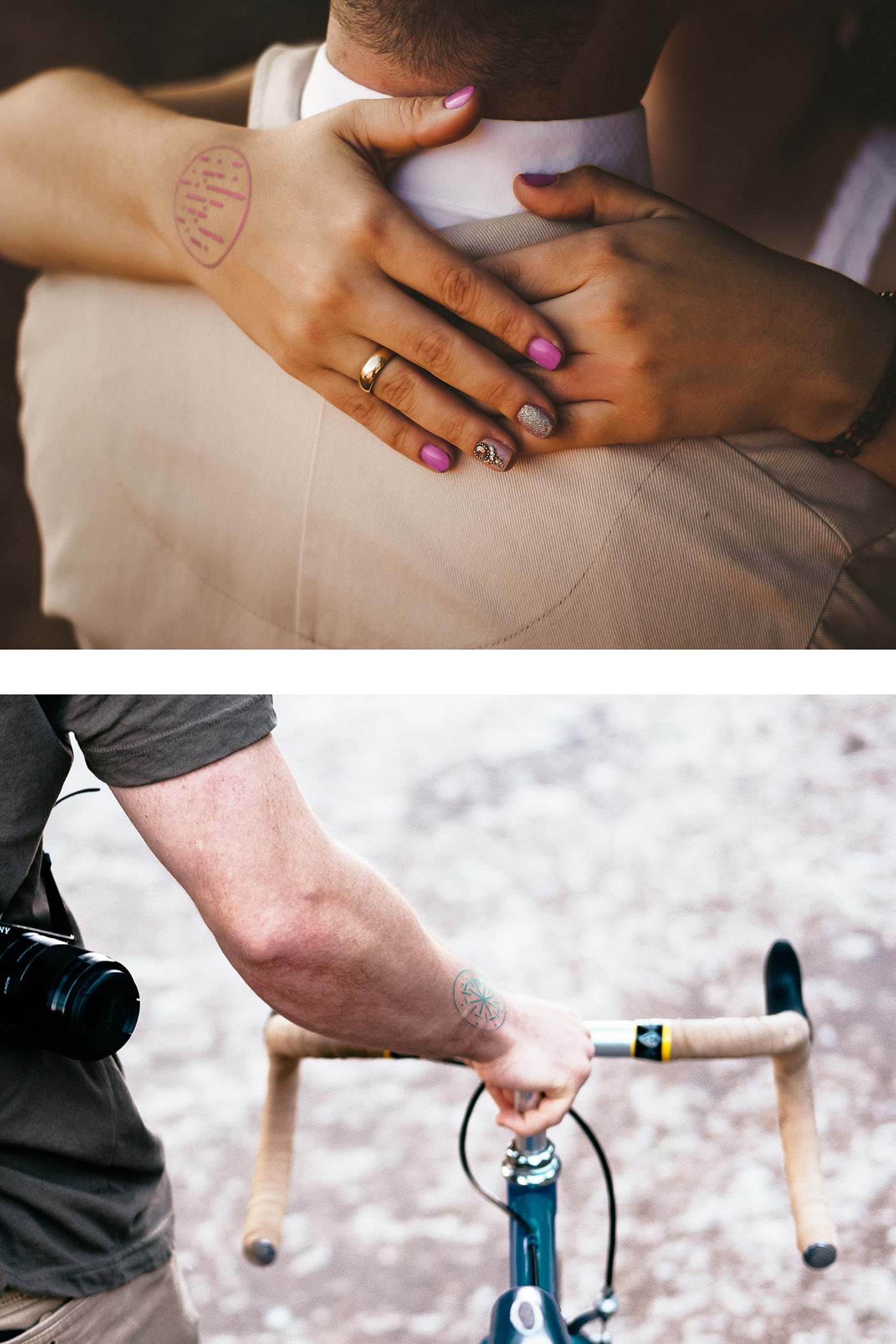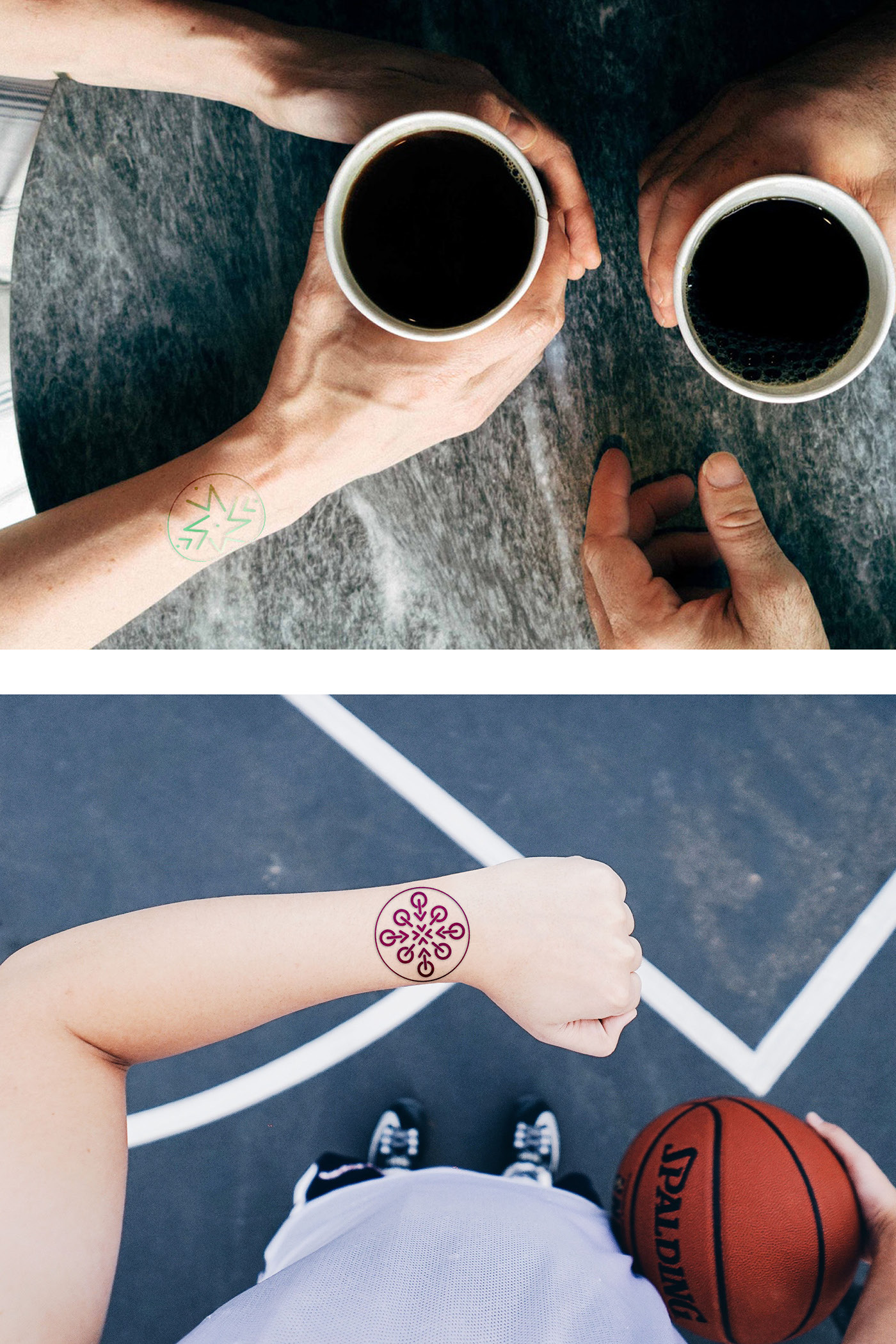MOTU is a speculative design project which aims to trigger discussions about the interpersonal, social, medical and political effect of emerging neurotechnology that could allow people to communicate their emotions brain-to-brain.
Background:
Nowadays technology using computer-mediated tools allows us to keep in contact with more people than we ever could in the past, but they don't always allow for the kind of closeness that we can achieve in face-to-face communication.
Imagine if we could let our brains directly communicate with one another. We would bypass the traditional communication tools involving language, posture, gesture, and facial expression without any interference, misinterpretation and conflict.
Luckily, this is not a dream: neurotechnology and IoT have the potential to connect our brains via networks that change the way we communicate. Also, some other technologies that are being envisioned or prototyped in the lab now, might be widely applied and accepted in the future.
The reinterpretation of collected data from BCI - Brain-Computer Interfaces allows us to analyze brain information so that we can know brain status or even emotional states. This technology has the potential to facilitate brain-to-brain communication, but it still has a long way to go.
What if brain-to-brain communication becomes mundane for people in the future. It's interesting to speculate about our attitude changes through the development process and what other factors to decide if it can move to the stage of widely applied and accepted.
Method:
The project creates a framework for a brand new technology that doesn't exist yet. Under this circumstance, it conducts an explorative approach that encourages hypothesis and experiments through all design phases. Instead of following user-centred approach, the project aims to serve as a catalyst for discussion and debate to examine the role and impact of this new technology on a daily basis.
It doesn't naturally come with a problem to solve, but it is more about problem making and problem framing. By speculating on a potential world with its system, service and products we can consider this an alternative to the "what if" question.
Design Outcome:
The design outcome scope included creating five illustrated scenarios that revolve around interpersonal, social, medical and political aspects in a near future society. A diegetic artefact that helps communicate the fiction and the interactions around was also designed. The artefact consists of two parts with different functionalities: the main part is the wearable digital skin that attaches to the arm for data collection and instant communication, and a supporting part that is installed in a communication device for more complex settings.
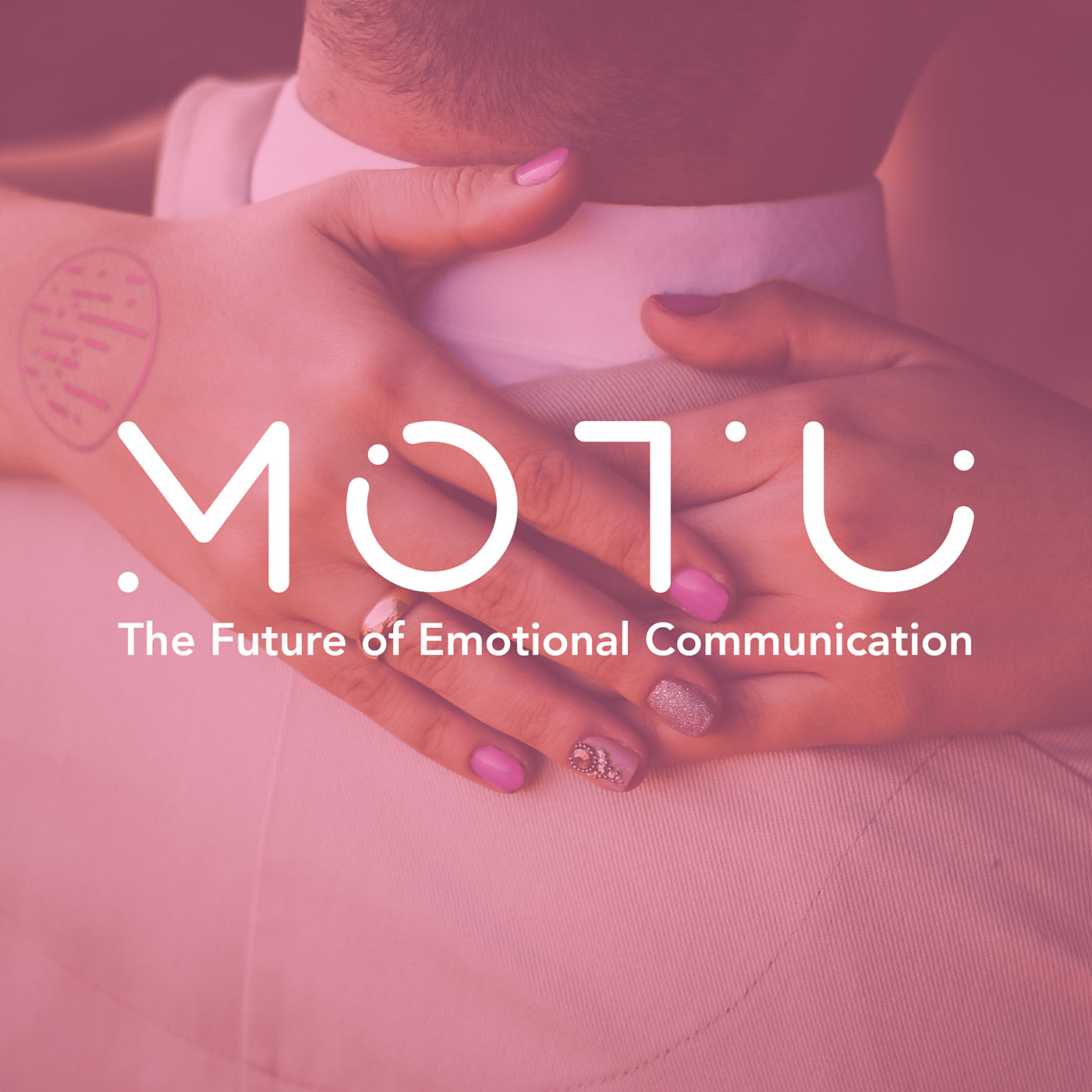
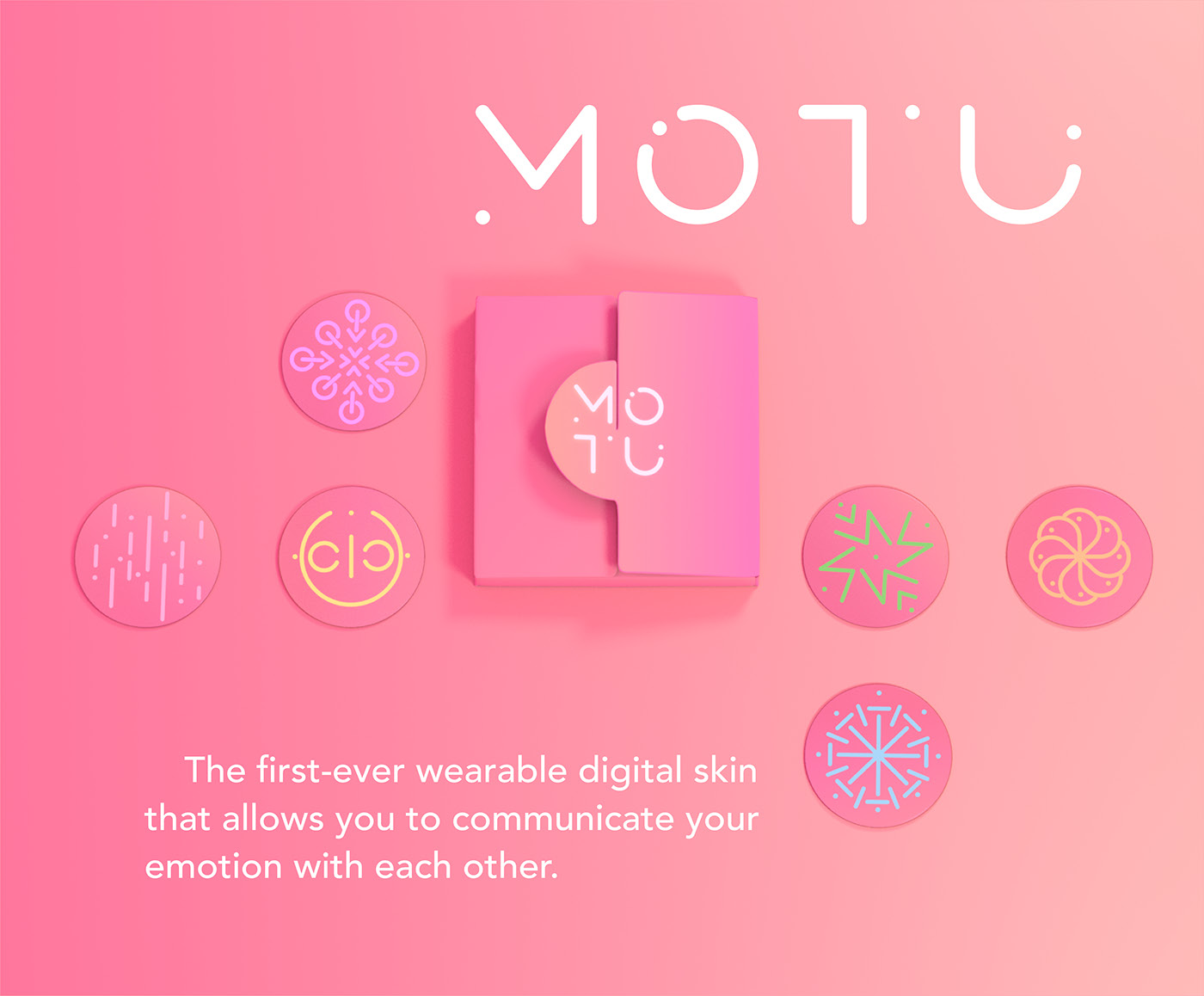
Digital Skin Conceptual Structure
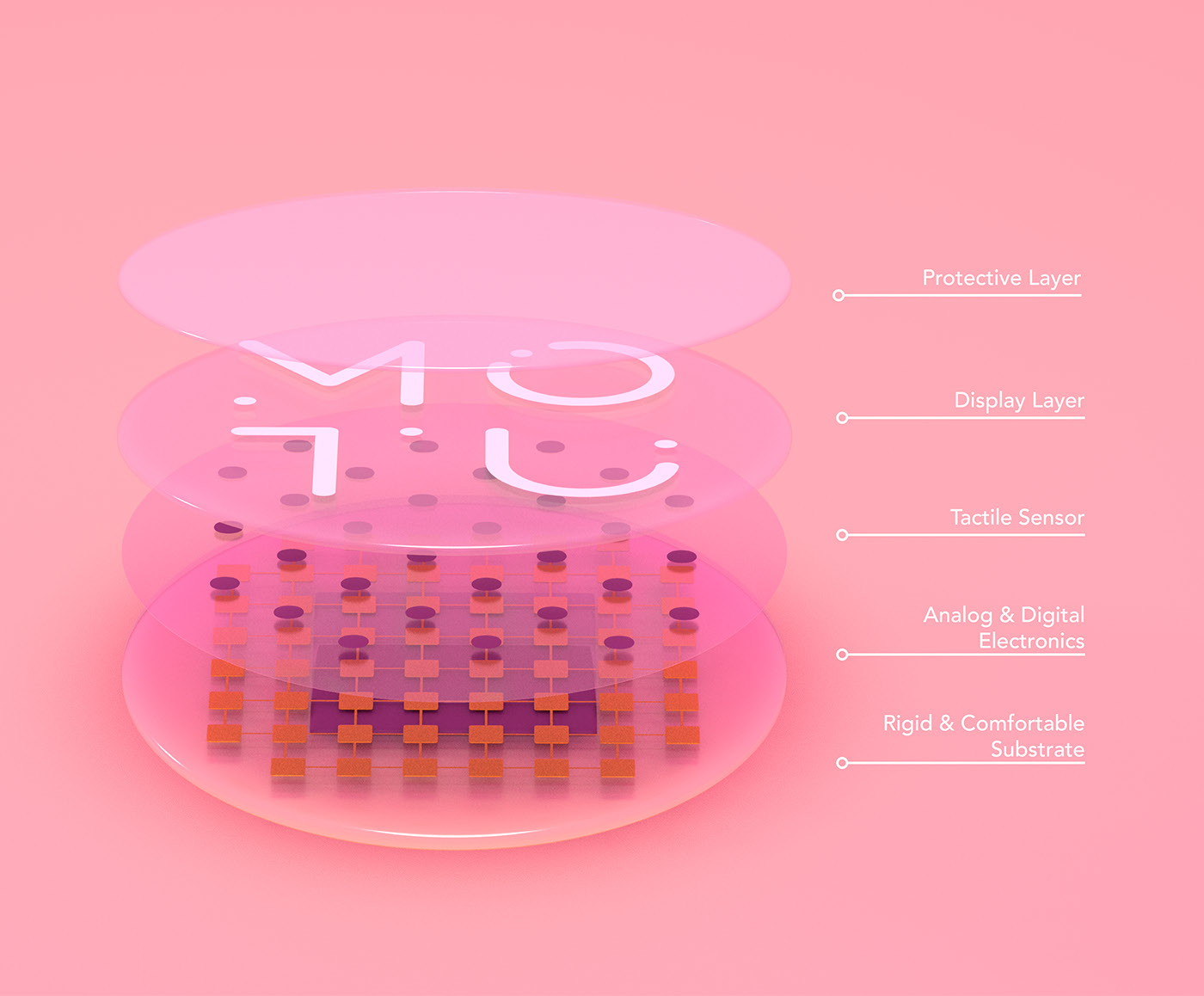
Detail Diagram
Outline of the diegetic artefact and its general functions

Application Flow
Natural User Interface (NUI) : The first time connection is completed by different gestures, and these kind of gestures fit the social norm. In addition, accepting and rejecting signals are completed by a swiping gesture towards or away from users, symbolizing the meaning of the action.
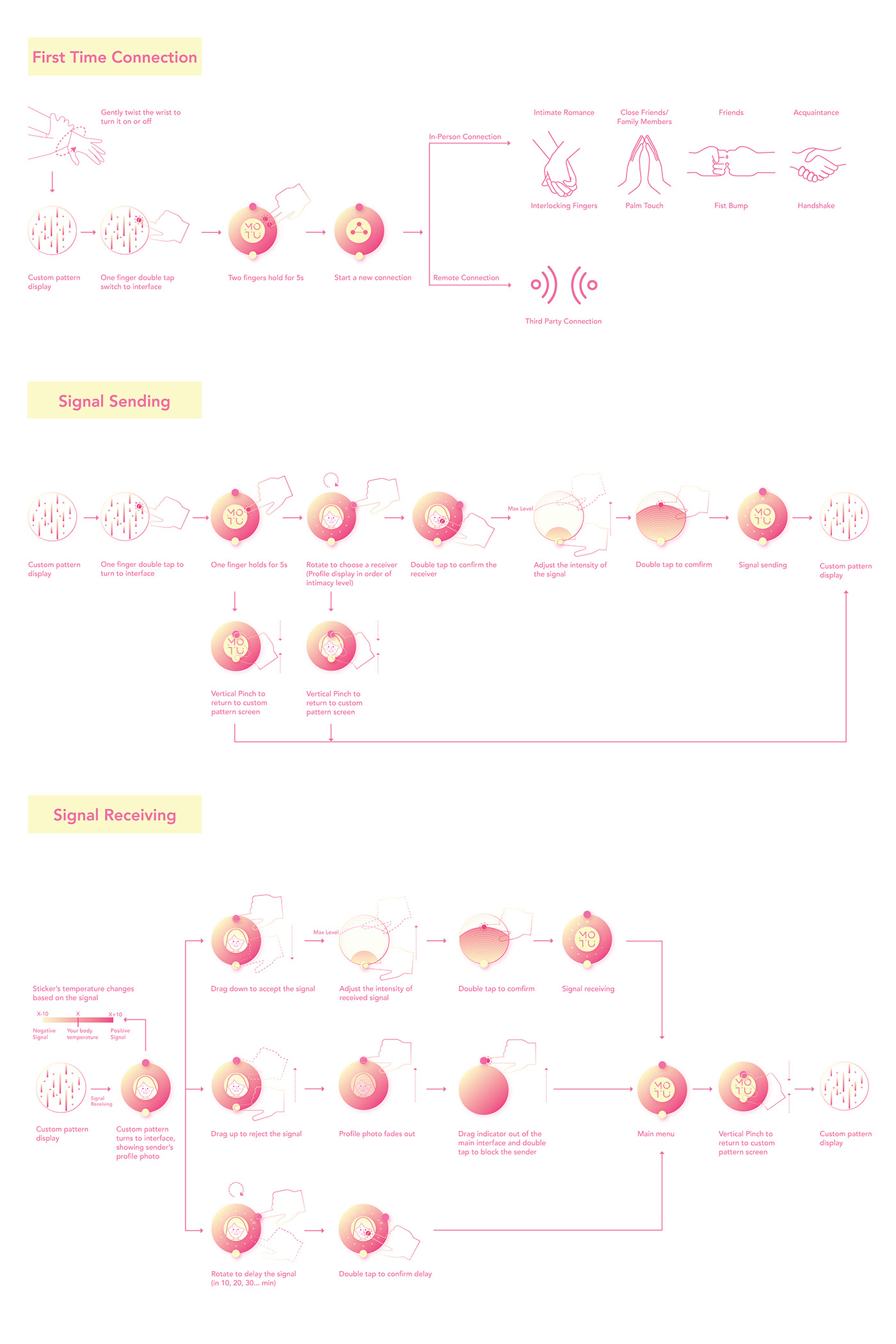
User Persona
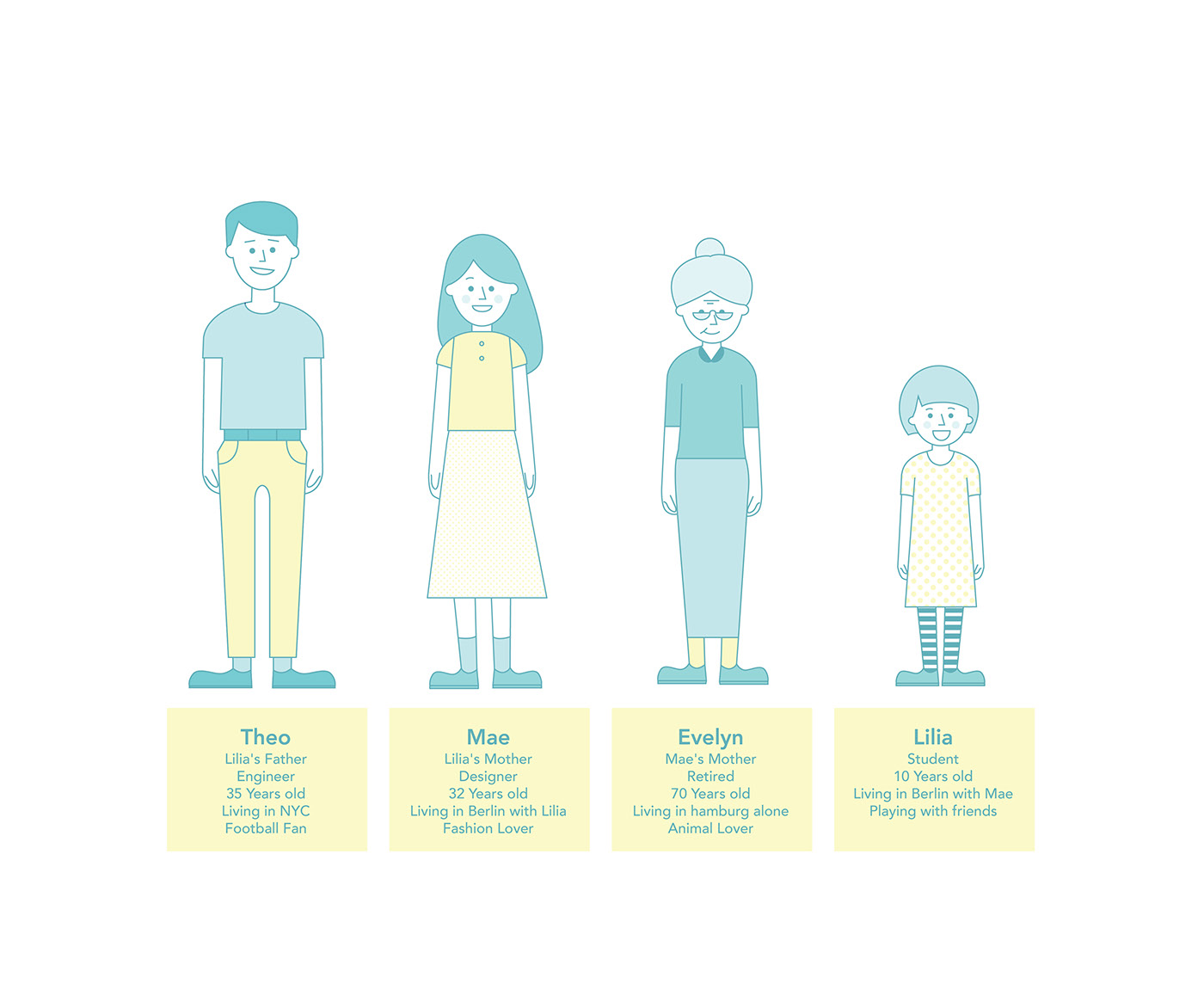
User Journey
1. First Time User Experiences
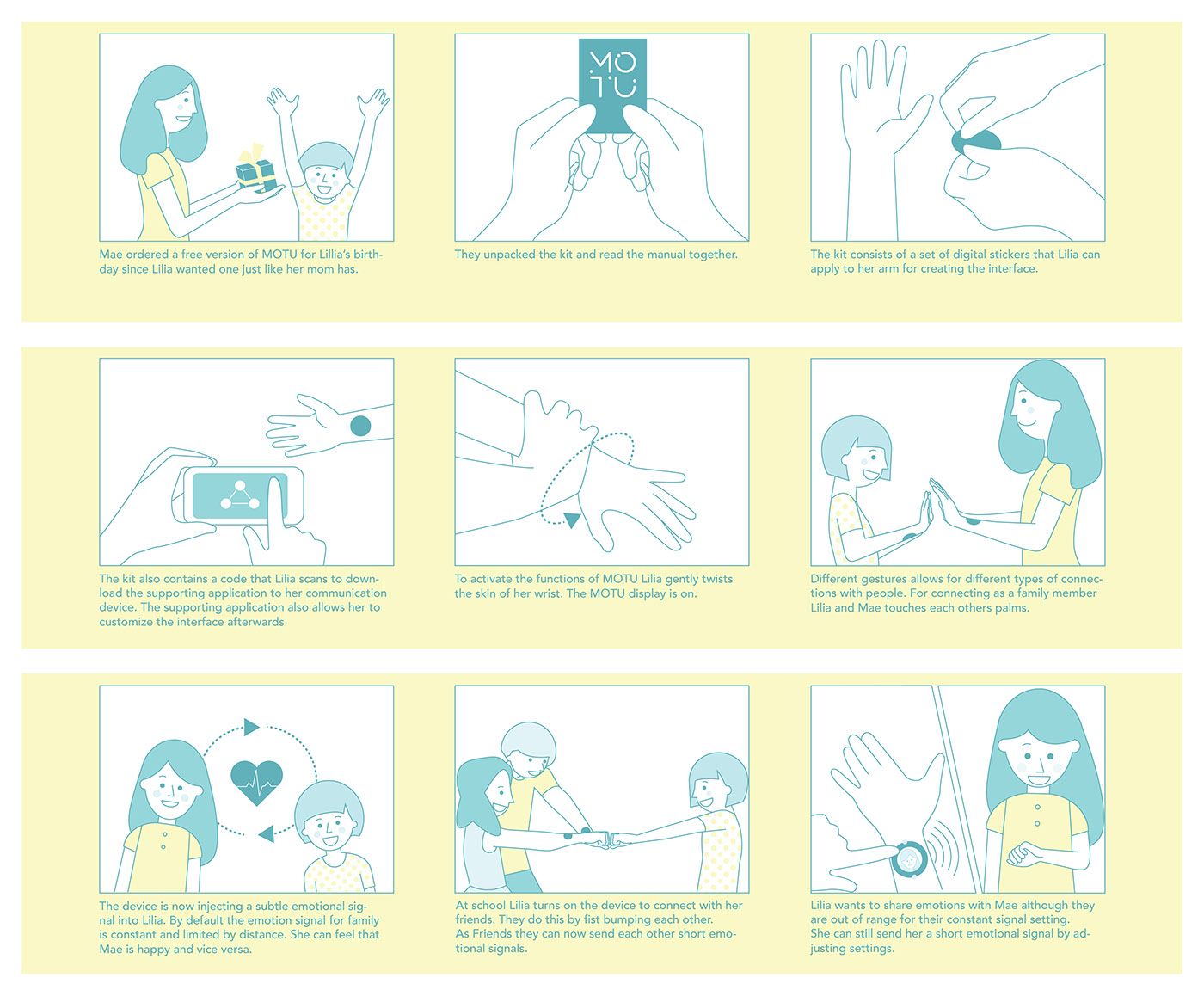
2. Long-distance Relationship
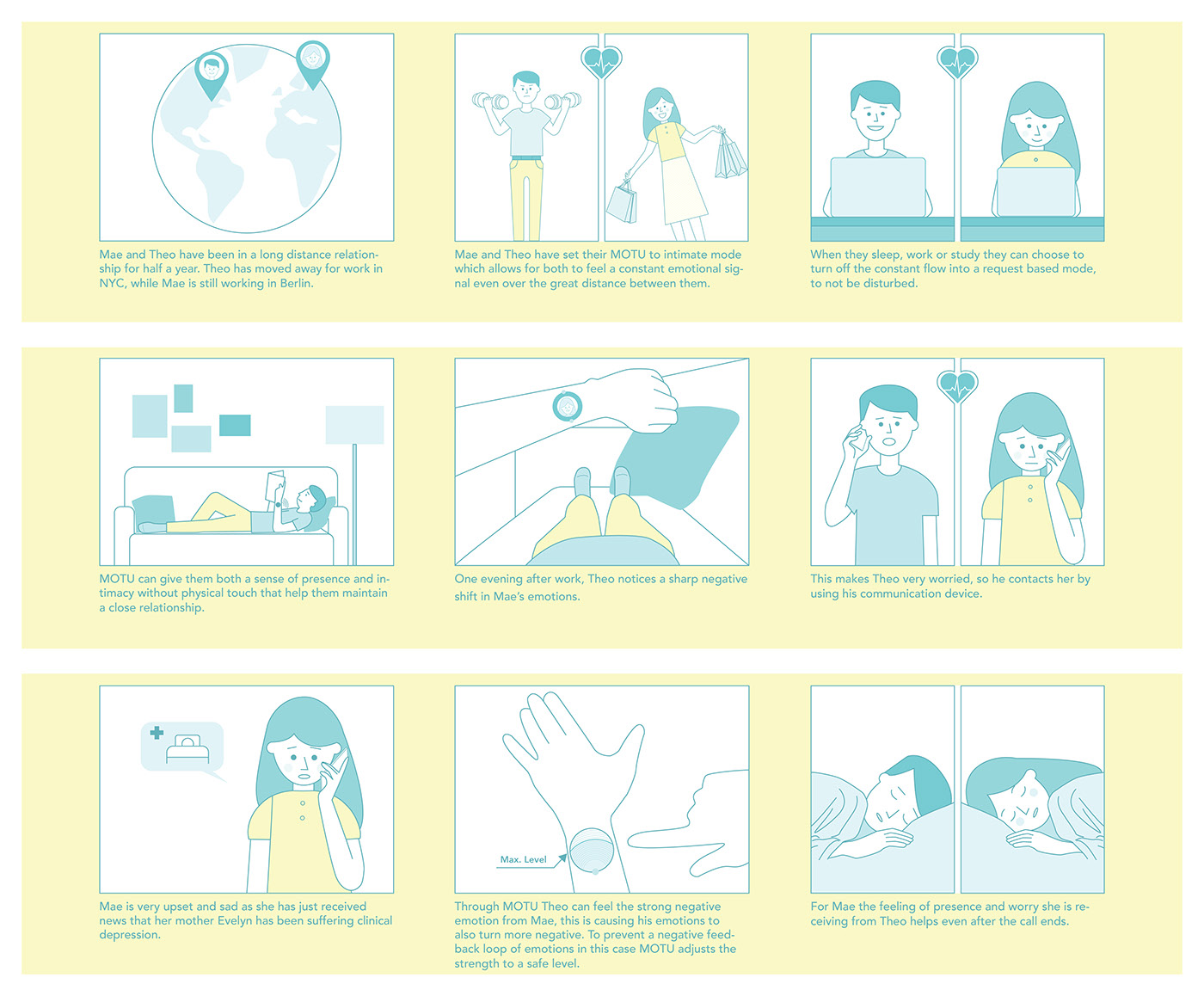
3. Commercial Uses
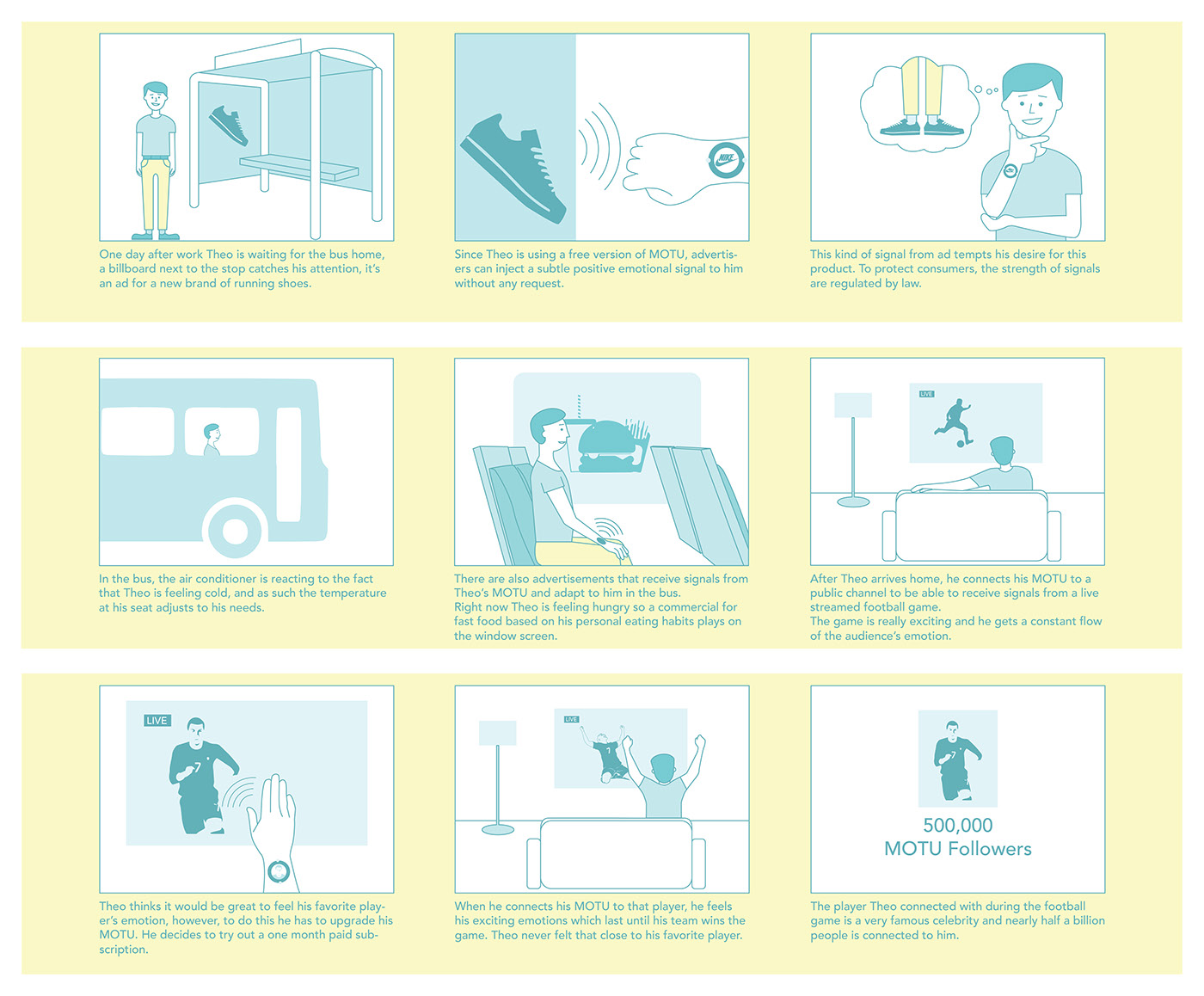
4. Medical Uses
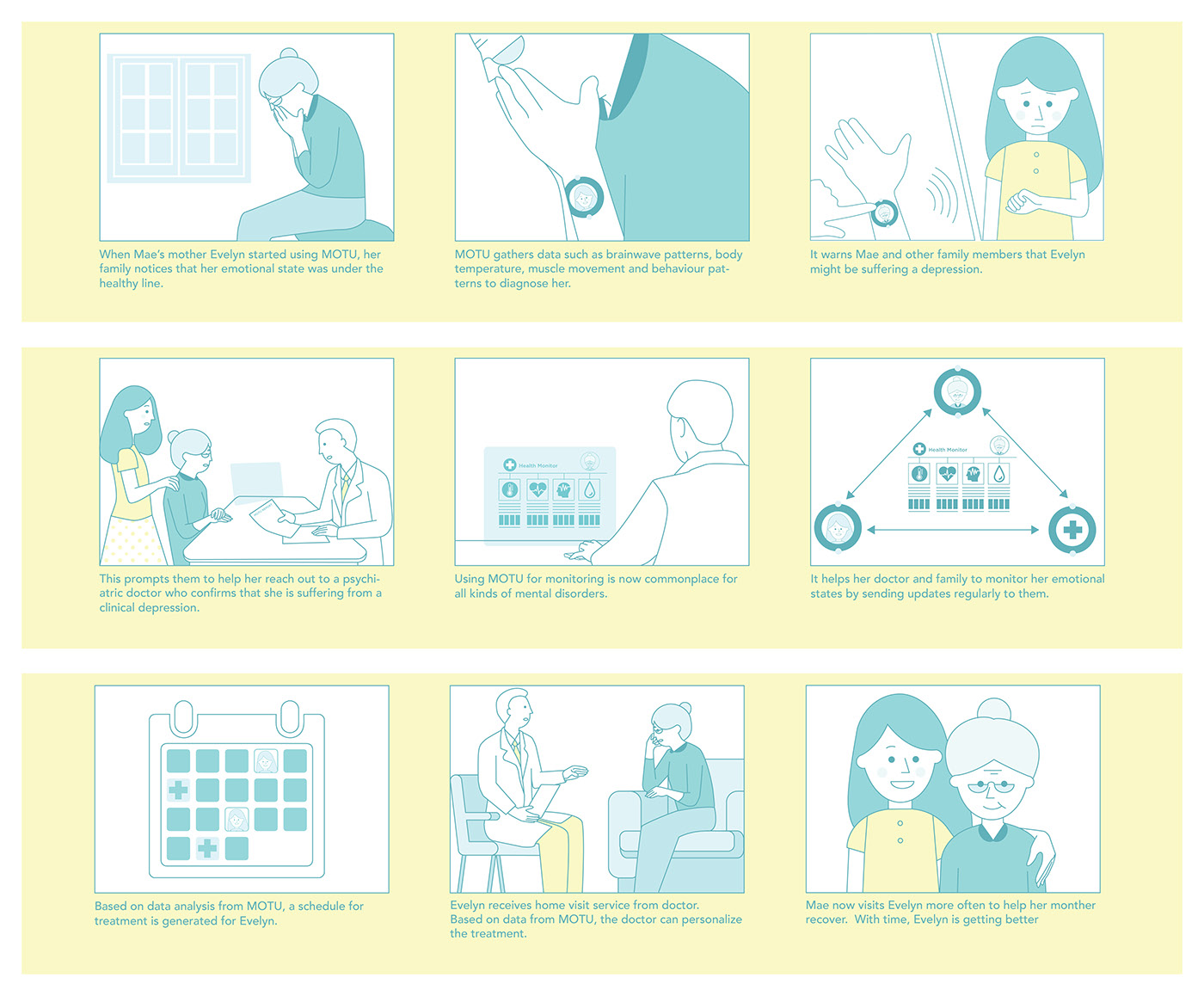
5. Government Monitoring

Poster Campaign
The purpose of the poster campaign is to put the product in different familiar everyday settings.
